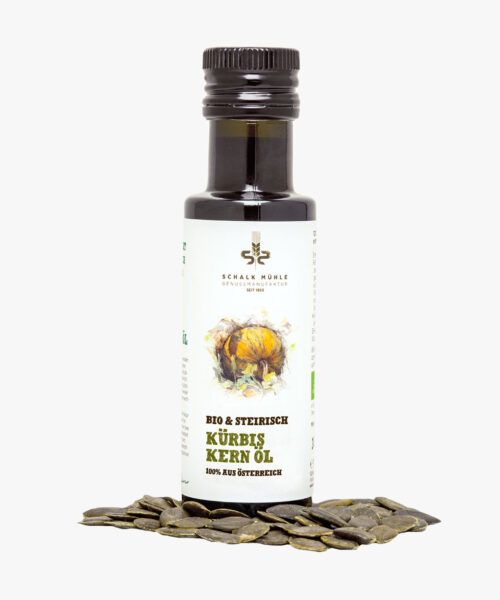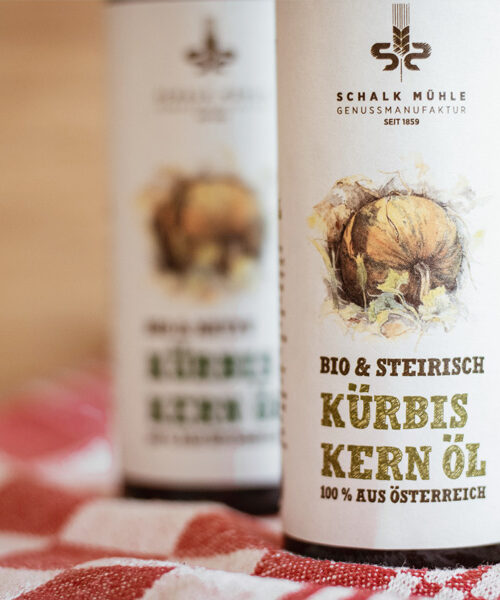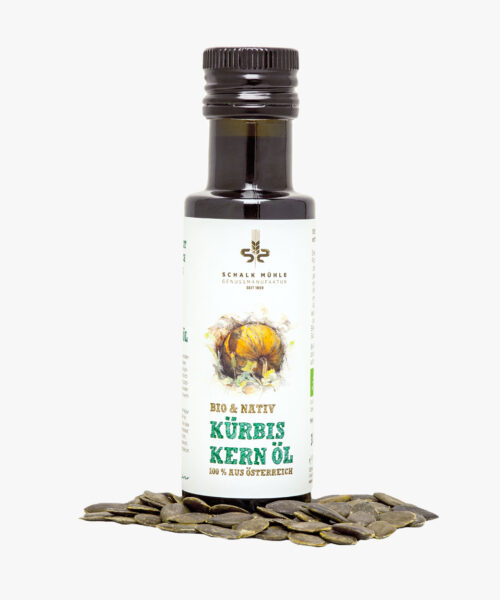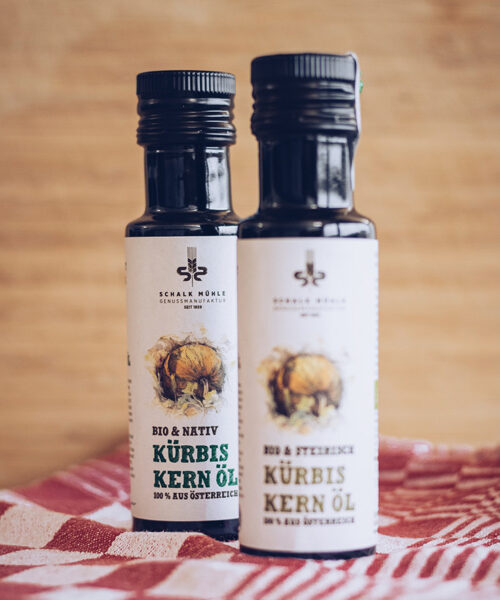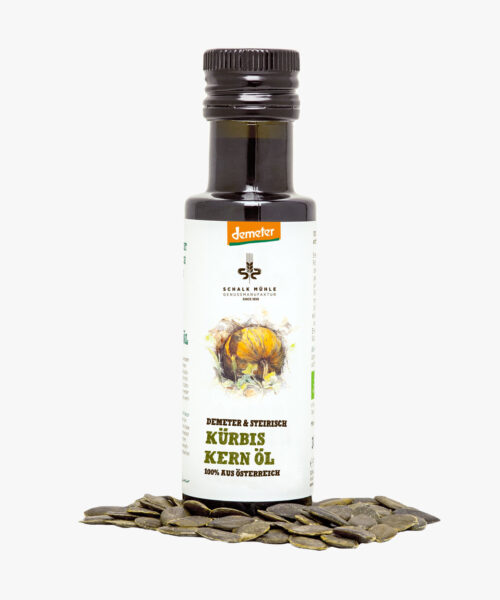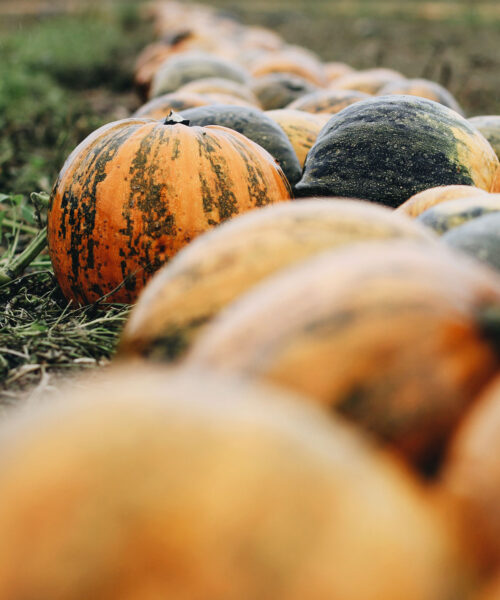Organic Styrian Pumpkin Seed Oil PGI

- Awards
- Production
- History
- Health
Our organic Styrian pumpkin seed oil g.g.A. impresses year after year. In addition to numerous awards as an acclaimed Styrian pumpkin seed oil producer, Schalk Mühle has received several honors, including from the Genuss Award, Ölkaiser, and the renowned Gault Millau. Each of these awards requires the highest quality under strict evaluation criteria and guarantees qualitatively excellent products.
The sowing of seeds for the Styrian oil pumpkin (Cucurbita pepo var. Styrica) takes place at the end of April or beginning of May in rows, allowing for multiple mechanical weeding between the rows. Depending on the weather, harvesting occurs between mid-September and mid-October using specially designed machinery. The pumpkin seeds are washed, dried, and cleaned of shell fragments immediately after harvesting. The fully ripe, plump, and dark green pumpkin seeds are essential for high-quality Styrian pumpkin seed oil P.G.A.
The dried and thus storable Styrian pumpkin seeds are pressed fresh as needed. Approximately 2.5 to 3 kg of these shell-free pumpkin seeds are required for one liter of Styrian pumpkin seed oil P.G.I., where the seeds are ground with our traditional stone mill, gently roasted, and pressed. A special feature is the manual, wood-fired roasting pan, individually adapted to the pumpkin seeds by our oil pressers. The experience of each oil presser is crucial. Thus, our pumpkin seed oil is produced in a traditional, gentle, and sustainable manner, without filtration or refining, resulting in a unique, deep green color and unforgettable nutty aroma.
The pressed remnants of the seed cake, known as pumpkin seed cake (commonly “oil cheese”), are finely ground and are very popular as an alternative to animal protein sources due to their high protein content. Additionally, our pumpkin seed protein powder tastes excellent with a slightly nutty flavor and fine roasting aroma.
The pumpkin plant is one of the oldest cultivated plants in the world. The earliest finds of the common pumpkin (Cucurbita pepo) are dated by scientists to around 10,700 to 9,200 BC. They come from southern Mexico. The pumpkin probably only reached Europe after the discovery of the Americas. It was a type of shelled pumpkin seed, which is still cultivated in many regions of the world today. The pumpkin family has an extraordinarily large number of relatives, one of which is Cucurbita pepo var. Styrica, the so-called shell-free Styrian pumpkin seed.
The Cucurbita pepo var. Styrica emerged over 100 years ago due to a natural mutation. The greatest advantage of the Styrian pumpkin seed lies in its high-quality ingredients and relevant characteristics, which you can read about under the Health section.
The shell-free oil pumpkin is now grown in Styria and some climatically favorable regions of Austria. For our Styrian pumpkin seed oil g.g.A., we use only the best pumpkin seeds. This excellent quality is immediately visible to our consumers through the white-green banderole.
Our Styrian pumpkin seed oil P.G.I.. not only tastes superb but is also particularly rich in antioxidants. These “free radicals” are highly reactive substances involved in the development of diseases. Pumpkin seed oil is particularly rich in antioxidants—unlike other cooking oils—which can neutralize the “free radicals” (as proven by scientific studies, such as those by Gilbert Fruhwirth and Albin Hermetter from the University of Graz).
The fat in pumpkin seeds is among the most valuable plant fats, as approximately 80% of the fatty acids are unsaturated, with about 50% being polyunsaturated.

